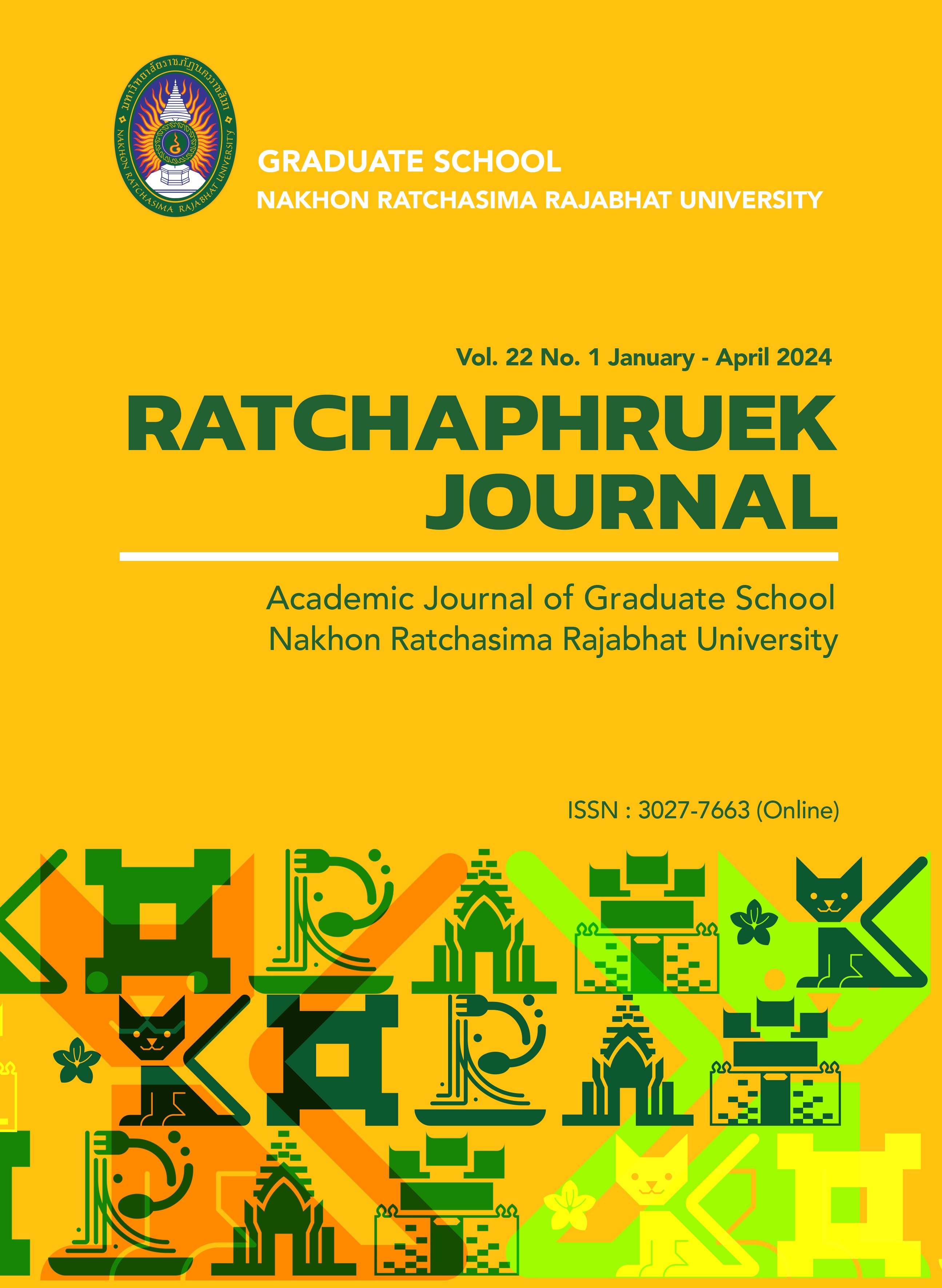Scientific Literacy on “DNA Technology” of Upper Secondary School Students
Main Article Content
Abstract
This research aimed 1) to explore scientific literacy of upper secondary school students on DNA technology, both overall and by competency, and 2) to compare scientific literacy between different grade levels using survey research. Samples were 244 grade 10-12 students in the science-mathematics class from a school in Nakhon Pathom province, which was obtained through cluster random sampling. Data was collected using scientific literacy test on DNA technology with a reliability of 0.79. Data were analyzed by percentage, mean, standard deviation and One-way ANOVA.
The results found that scientific literacy of the most students was at level 2 and below (94.26%), a minority (5.74%) was at levels 3-4, and no students found at levels 5-6 which is the highest level. When considering each competency , it was found student had an average scores of scientific literacy in each competency below 50 percent of the full score. Students grade 11 and 12 had a higher average score of scientific literacy than grade 10 at a statistical significance of .05. However, there was no difference between average score of students’ scientific literacy between grades 11 and 12. These findings suggested that teachers should design and organize learning that focuses more on enhancing scientific literacy for upper secondary school students.
Article Details

This work is licensed under a Creative Commons Attribution-NonCommercial-NoDerivatives 4.0 International License.
References
กุลธิดา ชนาภิมุข, สุรีย์พร สว่างเมฆ และปราณี นางงาม. (2563). การพัฒนาการรู้วิทยาศาสตร์ โดยใช้การจัดการเรียนรู้ตามแนวคิดวิทยาศาสตร์ เทคโนโลยี สังคม และสิ่งแวดล้อมของนักเรียนชั้นมัธยมศึกษาปีที่ 5 เรื่อง การเจริญเติบโตของพืช. วารสารศึกษาศาสตร์ มหาวิทยาลัยนเรศวร, 22(2), น. 62-73.
จิรวรรณ หนูเจริญ และจรรยา ดาสา. (2566). ความฉลาดรู้ด้านวิทยาศาสตร์ เรื่อง อาหารและโภชนาการของนักเรียนระดับชั้นมัธยมศึกษาตอนปลาย. วารสารราชพฤกษ์, 21(1), น. 91-105.
บุศมาพร กันทะวัง. (2562). แนวทางการจัดการเรียนรู้ตามแนวประเด็นทางวิทยาศาสตร์และสังคมเพื่อส่งเสริมการรู้พันธุศาสตร์ เรื่อง เทคโนโลยีทางดีเอ็นเอ สำหรับนักเรียนชั้นมัธยมศึกษาปีที่ 4 (วิทยานิพนธ์มหาบัณฑิต, มหาวิทยาลัยนเรศวร).
พลอยนัดดา ผาบไชย, สุรีย์พร สว่างเมฆ และอนุสรณ์ วรสิงห์. (2563). การพัฒนาการรู้วิทยาศาสตร์ เรื่อง กรด-เบส ด้วยการจัดการเรียนรู้ที่ใช้บริบทเป็นฐาน สําหรับนักเรียนชั้นมัธยมศึกษาปีที่ 5. วารสารศึกษาศาสตร์ มหาวิทยาลัยนเรศวร, 22(3), น. 164-176.
มนตรี จันตะมะ, สิรินภา กิจเกื้อกูล และมลิวรรณ นาคขุนทด. (2563). การจัดการเรียนรู้โดยใช้วิจัยเป็นฐานที่ส่งเสริมสมรรถนะการประเมินและออกแบบกระบวนการสืบเสาะหาความรู้ทางวิทยาศาสตร์และทักษะการทำงานร่วมกันเป็นทีม เรื่อง การสืบพันธุ์และการเจริญเติบโตของพืชดอกสำหรับนักเรียนชั้นมัธยมศึกษาปีที่ 5. วารสารมนุษยศาสตร์และสังคมศาสตร์ บัณฑิตวิทยาลัย มหาวิทยาลัยราชภัฏพิบูลสงคราม, 14(1), น. 141-157.
มนตรา พึ่งไพศาล. (2561). การศึกษาผลสัมฤทธิ์ทางการเรียน ความสามารถในการแก้ปัญหาทางวิทยาศาสตร์และการเปลี่ยนแปลงของลีลาการเรียนรู้ของนักเรียนชั้นมัธยมศึกษาปีที่ 5 ที่ได้รับการจัดการเรียนรู้แบบบูรณาการสะเต็มศึกษาร่วมกับวัฏจักรการเรียนรู้ของคอร์ป (วิทยานิพนธ์มหาบัณฑิต, มหาวิทยาลัยศรีนครินทรวิโรฒ).
ศิริชัย กาญจนวาสี. (2556). ทฤษฎีการทดสอบแบบดั้งเดิม (พิมพ์ครั้งที่ 7) ฉบับปรับปรุงเพิ่มเติม. กรุงเทพฯ: โรงพิมพ์แห่งจุฬาลงกรณ์มหาวิทยาลัย.
สถาบันส่งเสริมการสอนวิทยาศาสตร์และเทคโนโลยี. (2560). ยกระดับผลการเรียนรู้วิทย์-คณิต. สืบค้นเมื่อวันที่ 24 กรกฎาคม 2565, จาก https://www.ipst.ac.th/news/27587/20220530-news.html
สถาบันส่งเสริมการสอนวิทยาศาสตร์และเทคโนโลยี. (2561). หนังสือแบบเรียนสาระการเรียนรู้เพิ่มเติม ชีววิทยา เล่ม 2 (พิมพ์ครั้งที่ 2). กรุงเทพฯ: สกสค. ลาดพร้าว.
สถาบันส่งเสริมการสอนวิทยาศาสตร์และเทคโนโลยี. (2562). ความฉลาดรู้ด้านวิทยาศาสตร์ ปี 2018. สืบค้นเมื่อวันที่ 28 กรกฎาคม 2565, จาก https://pisathailand.ipst.ac.th/about-pisa/scientific-literacy/
สถาบันส่งเสริมการสอนวิทยาศาสตร์และเทคโนโลยี. (2564). ความฉลาดรู้ด้านวิทยาศาสตร์ ปี 2021. สืบค้นเมื่อวันที่ 28 กรกฎาคม 2565, จาก https://pisathailand.ipst.ac.th/about-pisa/scientific-literacy/
สุนีย์ คล้ายนิล. (2555). การศึกษาวิทยาศาสตร์ในไทย: การพัฒนาและภาวะถดถอย. กรุงเทพฯ: แอดวานส์ ปริ้นติ้ง เซอร์วิช.
สำนักงานเลขาธิการสภาการศึกษา. (2560). แผนการศึกษาแห่งชาติ พ.ศ. 2560-2579. กรุงเทพฯ: พริกหวานกราฟฟิค.
Krejcie, R. V. & Morgan, D. E. (1970). Determining sample size for research activities. Journal Education and Psychological Measurement, 30(3), pp. 608-609.
Lin, S. & Mintzes, J. J. (2010). Learning argumentation skills through instruction in socioscientific issues: The effect of ability level. International Journal of Science and Mathematics Education, 8(6), pp. 993-1017.
Organisation for Economic Co-operation and Development. (2019). What is PISA?. Retrieved May 12, 2022, from http://www.oecd.org/pisa
Piaget. J. (1952). The Original of intelligence in Children. New York: International Universitie Press.
Smith, M. & Steinhauer, J. (2018). Trends in Genetics. Call press revie, 34(1), pp. 1-4.
Steinhauer, J. (2018). Why is genetics education so important? Trend in Genetics. Call press revie, 34(1), pp. 89-104.


